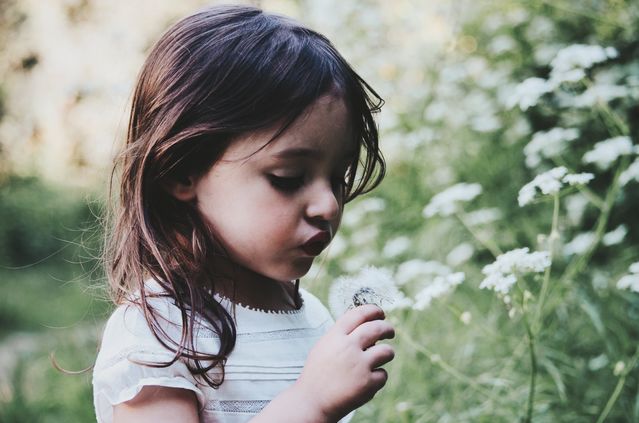Environment
Sensing the Subtle: The Highly Sensitive Child
Why some children are more strongly affected by their environment than others.
Posted March 15, 2020
“Sarah” is a seven-year-old girl with an inquisitive mind and a clever sense of humor. She often asks her family thought-provoking questions and uses big words for her age. With her friends and family, Sarah is talkative and playful but, when meeting new people, she tends to be cautious and can come across as being shy. Compared to her siblings, Sarah was a reactive baby. She cried easily and was prone to becoming overstimulated. She needed to be close to her mother at all times, didn’t like being held by strangers, and experienced stronger separation anxiety than her siblings.
Sarah has always been bothered by crowds and busy places, and startles easily with sudden or loud noises. She is prone to “meltdowns” and trouble sleeping at night if she doesn’t have sufficient quiet time to rest each day. Although Sarah enjoys spending time with her best friends, she usually calls her parents to pick her up early from birthday parties or sleepovers as she finds group social situations overwhelming. Sarah’s teachers describe her as highly perceptive. She notices subtleties in her physical and social environment that the other children don’t seem to notice; a subtle change in her classmate’s mood, the new earrings her teacher is wearing, the slight whistle of her friend’s nose when he inhales. Sarah is also highly empathic and notices when other people or animals are distressed or in pain. Sarah’s characteristics are typical for a highly sensitive child.

Sensory Processing Sensitivity: A temperament trait
It is estimated that around 30% of the population are highly sensitive.1 High sensitivity is considered to be a heritable and evolutionarily conserved temperament trait2 presenting equally in males and females, and observed in over 100 species of non-human animals,3 including monkeys, dogs, fish, and insects. Highly sensitive people, compared to those who are less sensitive, have:
- a greater capacity for noticing subtleties in their environment;
- a deeper cognitive processing of physical, social, and emotional stimuli;
- greater emotional reactivity to positive and negative stimuli and higher empathy; and
- are more easily overstimulated.4
The scientific term for high sensitivity is sensory processing sensitivity (SPS). Research shows that SPS is a continuous temperament trait with people falling somewhere on the sensitivity continuum between low sensitivity and high sensitivity.1 High SPS is thought to be driven by a highly sensitive, more reactive central nervous system. Elaine Aron, Ph.D., coined the terms Highly Sensitive Person (HSP)5 and Highly Sensitive Child (HSC)6 which have become popular terms used to describe the scientific concept of high SPS.
Highly sensitive people tend to be more aware of information in their environment and process this information on a more complex level than most people, which is believed to affect the way they think, learn, plan,7 and experience the world. From an evolutionary perspective,8 a heightened ability to perceive and process environmental stimuli is considered to be an advantage in certain situations when it increases an individual’s capacity to detect and respond to opportunities (e.g., food, alliances) and danger (e.g., predators, competitors) in the environment. We can liken the HSP to the canary in the coal mine—capable of providing advanced warning of danger (or opportunity) before it is detected by the majority of the group.
More affected by the environment for better and for worse.
Highly sensitive individuals across species have been found to be more sensitive to their environment. It is hypothesised that because highly sensitive children process experiences more thoroughly, their development is more strongly affected by environmental influences.5 Environments, in the context of SPS, include not only physical environments (e.g., food, caffeine, medication), but also social environments (e.g., family dynamics, other people’s moods, crowds), sensory stimuli (e.g., auditory, olfactory, tactile, visual), and internal experiences (e.g., thoughts, emotions, bodily sensations such as hunger, pain).9
Although high SPS is considered to be a neurobiological difference and not a disorder, research has shown that in stressful and unsupportive early environments, highly sensitive children may have poorer developmental outcomes and an increased likelihood of experiencing behavioural disturbance and psychological difficulties (e.g., anxiety, depression) in childhood and later life.5,10,11,12,13,14,15 In contrast, in supportive and highly nurturing early environments, those who are highly sensitive have the capacity to flourish and may have better developmental trajectories than less sensitive individuals (e.g., enhanced emotional wellbeing, greater social competence).5,13,14,15
Thomas Boyce, MD, author of ‘The Orchid and the Dandelion’,15 likens sensitive children to orchids—flowers that require very specific, supportive environments to thrive. He says that “these children show an exceptional capacity for succeeding in nurturant, supportive circumstances, but sustain disproportionate numbers of illnesses and problems when raised in stressful, adverse social conditions”. In contrast, children who show a biological indifference to experiences of adversity, and thrive in almost all environments, are likened to dandelions.
Given that highly sensitive children are more affected by their environment—for better and for worse—it is of critical importance that caregivers, educators, and health professionals are aware of the trait, and work together to create the supportive and nurturing conditions these “orchid children” need to develop optimally, experience wellbeing, and flourish.
References
[1] Lionetti, F., Aron, A., Aron, E. N., Burns, G. L., Jagiellowicz, & Pluess, M. (2018). Dandelions, tulips and orchids: evidence for the existence of low-sensitive, medium-sensitive and high-sensitive individuals. Translational Psychiatry, 8, 24.
[2] Greven, C. U., Lionetti, F., Booth, C., Aron, E. N., Fox, E., Schendan, H. E., Pluess, M., Bruining, H., Acevedo, B., & Bijttebier, P. (2019) Sensory processing sensitivity in the context of environmental sensitivity: A critical review and development of research agenda. Neuroscience and Biobehavioral Reviews, 98, 287–305.
[3] Wolf, M., van Doorn, G. S., & Weissing, F. J. (2008). Evolutionary emergence of responsive and unresponsive personalities. Proceedings of the National Academy of Sciences of the United States of America, 105, 15825–15830.
[4] Aron, E. N., Aron, A., & Jagiellowicz, J. (2012). Sensory processing sensitivity: A review in the light of the evolution of biological responsivity. Personality and Social Psychology Review, 16, 262–282.
[5] Slagt, M., Dubas, J. S., van Aken, M. A., Ellis, B. J., Dekovic, M. (2018). Sensory processing sensitivity as a marker of differential susceptibility to parenting. Developmental Psychology, 54, 543-558.
[6] Aron, E. N. (1999). The Highly Sensitive Person: How to Thrive When the World Overwhelms You. London: Element.
[7] Aron, E. N. (2002). The Highly Sensitive Child: Helping our children thrive when the world the world overwhelms them. New York: Harmony Books.
[8] Ellis, B. J., Boyce, T., Belsky, J., Bakerman-Kranenburg, M., & Van Ijzendoorn, M. H. (2011). Differential susceptibility to the environment: An evolutionary–neurodevelopmental theory. Development and Psychopathology, 23, 7–28.
[9] Greven, C., Lionetti, F., Boothe, C., Aron, E., Fox. E., Schendang, H., Pluess, M., Bruining, H., Acevedo, B., Bijttebier, P., and Homberga, J. (2019). Sensory Processing Sensitivity in the context of Environmental Sensitivity: A critical review and development of research agenda. Neuroscience & Biobehavioral Reviews, 98, 287–305
[10] Booth, C., Standage, H., & Fox, E. (2015). Sensory-processing sensitivity moderates the association between childhood experiences and adult life satisfaction. Personality and Individual Differences, 87, 24–29.
[11] Aron, E. N., Aron, A., & Davies, K. M. (2005). Adult shyness: The interaction of temperamental sensitivity and an adverse childhood environment. Personality and Social Psychology Bulletin, 31, 181–197.
[12] Liss, M., Timmel, L., Baxley, K., Killingsworth, P. (2005). Sensory processing sensitivity and its relation to parental bonding, anxiety, and depression. Personality and Individual Differences, 39, 1429–1439.
[13] Pluess, M., & Boniwell, I. (2015). Sensory Processing Sensitivity predicts treatment response to a school-based depression prevention program: Evidence of vantage sensitivity. Personality and Individual Differences, 82, 40–45.
[14] Suomi, S. J., 1997. Early determinants of behaviour: evidence from primate studies. British Medical Bulletin, 53, 170–184.
[15] Boyce, W. T. (2019). The orchid and the dandelion: Why some people struggle and how all can thrive. London: Bluebird Books for Life.


